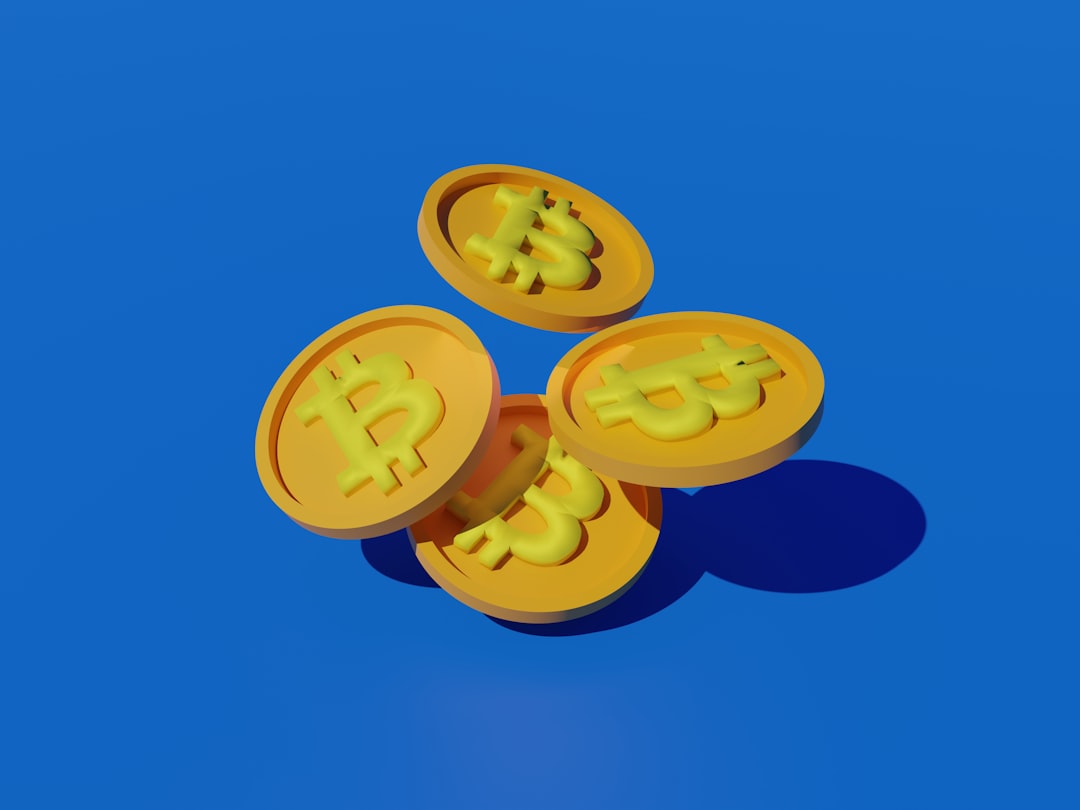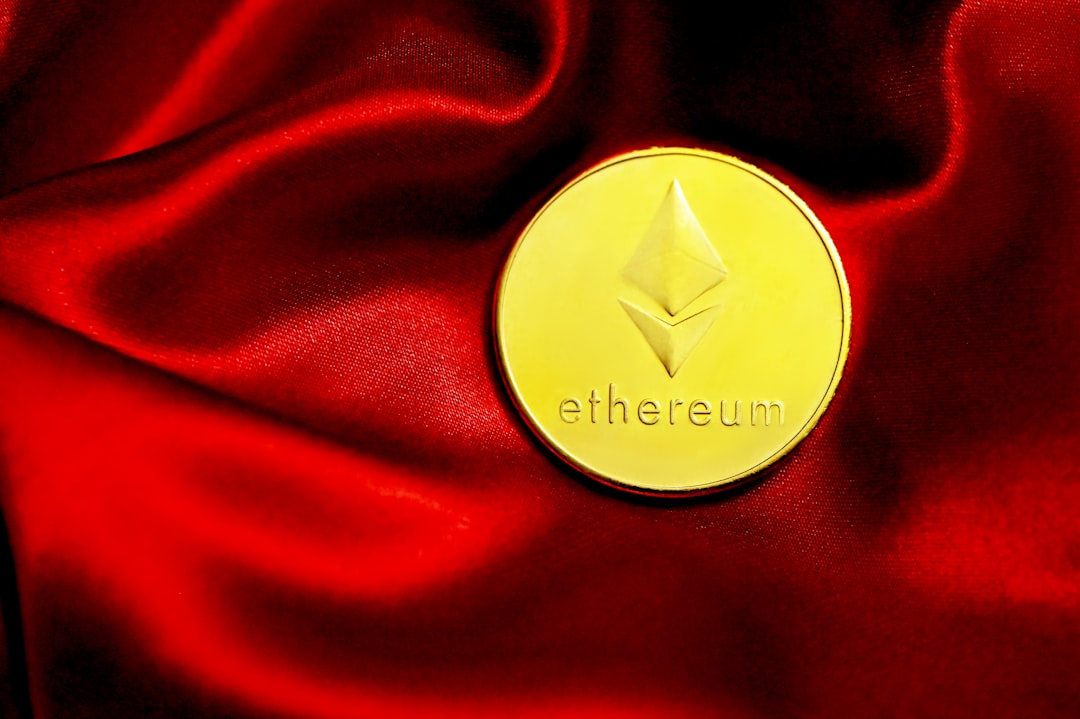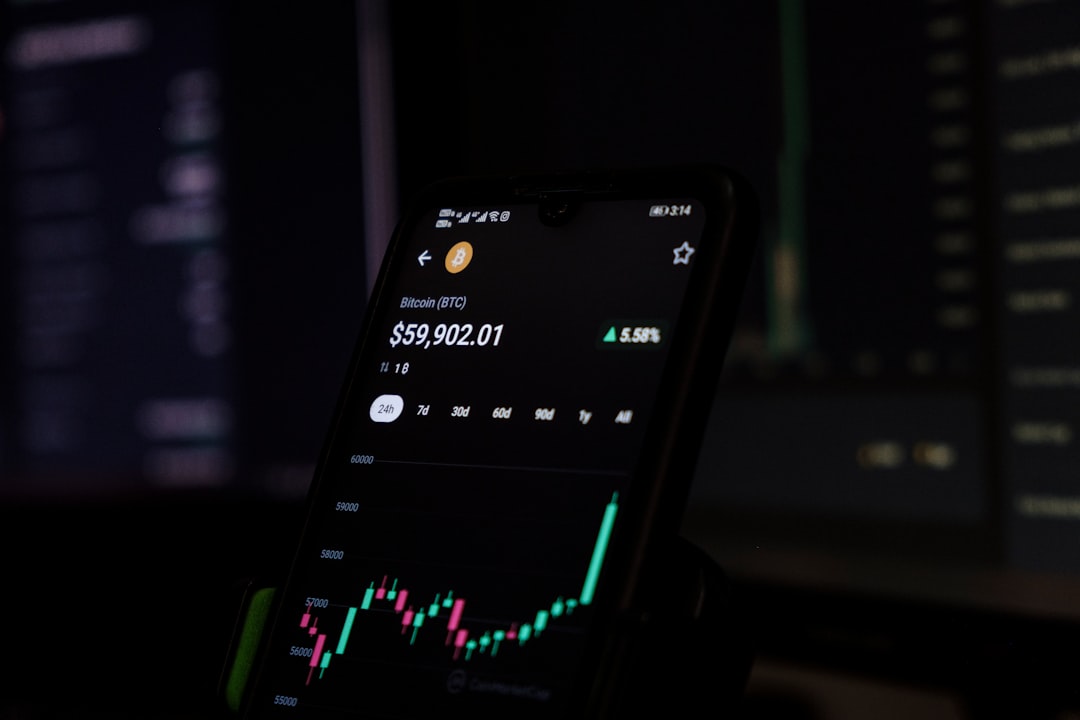GAS Token Surges Analyzing the 24-Hour Performance of Today's Top Cryptocurrency Gainer
GAS Token Surges Analyzing the 24-Hour Performance of Today's Top Cryptocurrency Gainer - GAS Token's Sudden 1,300% Price Surge in 24 Hours
GAS Token's price has skyrocketed by a staggering 1,300% in just 24 hours, making it the top-performing cryptocurrency during this period. This sudden surge has understandably caught the attention of the crypto community, fueling speculation about the reasons behind this dramatic increase. It's important to remember that volatility is a defining characteristic of the current crypto market, and this spike could be fueled by several factors, including investor enthusiasm and broader market sentiment.
However, it's crucial to remember that such extreme price movements aren't uncommon in the crypto world, and past instances show how quickly these gains can dissipate. As we continue to observe this development, it's crucial for investors to approach GAS Token with a critical eye, weighing the potential rewards against the inherent risks.
GAS Token's 1,300% price jump in 24 hours is eye-catching, but it also highlights the volatile nature of the cryptocurrency market. Such a dramatic increase makes it a top gainer in recent history, leaving some questioning its sustainability. It's tempting to attribute the surge to factors like social media buzz or speculative news, but we need to consider the influence of algorithmic trading. While the sheer volume of trades during this surge is noteworthy, we must analyze the long-term demand to gauge its legitimacy. The current bull market likely plays a role, as investors chase profits, but the impact of institutional involvement remains uncertain. The liquidity of GAS Token becomes critical here, as lower liquidity could amplify price movements due to even modest buy or sell orders. As with other cryptocurrency spikes, this surge could be a harbinger of a potential correction, prompting cautious investors to assess the risks involved. It's important to approach these events with a critical eye and analyze not just the immediate price action but also the underlying factors that drive these volatile movements.
GAS Token Surges Analyzing the 24-Hour Performance of Today's Top Cryptocurrency Gainer - Trading Volume Reaches $87 Million Amid Rally
The recent market rally has seen a dramatic increase in trading volume for the GAS token, reaching a notable $87 million. This surge in activity likely reflects the heightened investor interest sparked by the token's astonishing 1,300% price jump in the past 24 hours. However, it's important to acknowledge that such high trading volumes often accompany speculation, raising questions about the long-term sustainability of this momentum. The crypto market is notoriously volatile, and while the current surge is exciting, investors need to remember that rapid reversals are just as possible. This scenario underscores the unpredictable nature of cryptocurrency trading, emphasizing the need for careful evaluation of both immediate gains and the potential for long-term success.
The recent $87 million trading volume surrounding GAS Token, while impressive, isn't a standalone statistic. It's a window into how investors respond to rapid price shifts. The sheer number of trades suggests a surge of interest, likely fueled by a mix of retail investors and institutional players.
One of the intriguing aspects is the role of psychological thresholds. Certain price points, like the $87 million mark, can become magnets for speculative trades. This is particularly relevant in the cryptocurrency world, where chart patterns and anticipated price resistance levels often drive investment decisions.
But increased volume isn't always a good thing. GAS Token might have a relatively thin order book, meaning that large trades can disproportionately impact its price. This volatility can be both a boon and a bane, depending on your perspective.
Of course, algorithmic trading is another element to consider. Automated systems that react to price movements can create self-reinforcing loops of activity, amplifying the initial surge. This is a growing trend in crypto, and it's crucial to factor it into any analysis.
While the $87 million figure is striking on its own, it's part of a broader narrative. The trading volume of GAS Token likely reflects what's happening across the cryptocurrency market as a whole. Strong performance in one coin often reverberates across the sector, potentially influencing the price and activity of other assets.
Additionally, the sharp increase in trading volume could be driven by arbitrage opportunities. When prices fluctuate wildly, traders can exploit these disparities by buying low on one exchange and selling high on another, further contributing to the volume frenzy.
As a researcher, I'm curious about the underlying sentiment driving this volume. Is it simply hype and speculation, or are there fundamental factors at play? Monitoring investor sentiment through surveys and social media can provide valuable insights.
It's also crucial to remember that exchanges play a crucial role in trading volume. The same coin can experience vastly different activity levels depending on where it's being traded. A surge on a popular exchange might be reinforced by news and community buzz, but it's vital to look beyond those platforms and consider the potential risks of trading on smaller, less liquid exchanges.
Ultimately, we need to analyze the trading volume in conjunction with other technical indicators, like the RSI and MACD. These indicators can highlight potential overbought or oversold conditions, which could signal a looming correction.
History also provides valuable lessons. While large spikes in trading volume often precede substantial price changes, they are frequently followed by periods of normalization. This reinforces the importance of applying a critical eye to the market, recognizing that both opportunities and risks are present at all times.
GAS Token Surges Analyzing the 24-Hour Performance of Today's Top Cryptocurrency Gainer - Weekly Performance Shows 2,110% Gain for GAS
The GAS token has exploded, gaining a massive 2,110% over the past week. This comes on top of a staggering 1,300% price jump just 24 hours earlier. This incredible surge has put GAS in the spotlight, drawing attention from crypto traders and analysts alike. While these gains are certainly impressive, they also raise concerns about the market's sustainability.
The question on everyone's mind is: is this real demand, or just another speculative bubble? With trading volume reaching $87 million, it's clear that there's a lot of interest in GAS. However, the volatile nature of cryptocurrencies makes it crucial to be cautious. Investors need to carefully consider whether this surge is backed by solid fundamentals or if it's simply a flash in the pan.
GAS Token's weekly performance has been nothing short of astounding, with a 2,110% gain over the past seven days. This kind of extreme upward movement is reminiscent of the wild swings seen in the early days of Bitcoin and Ethereum. It's definitely a reminder that crypto markets can still be driven by speculative bubbles. This jump could significantly boost its market cap, even catapulting it to the top tier of cryptocurrencies and potentially drawing in larger institutional players.
But a gain like this comes with a few caveats. It could spell trouble for short-sellers who might be forced to cover their positions, exacerbating the upward trend in what's known as a short squeeze. It's also likely to trigger a re-evaluation of established technical resistance levels, requiring traders to adjust their strategies. The influence of algorithmic trading is hard to ignore, as these systems can automatically amplify price movements when they detect upward momentum.
It's important to note that GAS's performance could impact the broader cryptocurrency landscape. As traders often move between assets exhibiting significant volatility, we might see its momentum transfer to other coins. This kind of surge tends to draw in a lot of retail investors, fueled by the ever-present fear of missing out (FOMO).
However, such a rapid increase raises serious questions about the fundamental value driving it. If speculation is the primary factor behind this boom, long-term sustainability is questionable. The liquidity of GAS Token plays a crucial role in this scenario. A highly liquid market could sustain this momentum. However, if liquidity is limited, we could witness a rapid correction. It's always vital to dig deeper and analyze the factors behind these market events before making any decisions.
GAS Token Surges Analyzing the 24-Hour Performance of Today's Top Cryptocurrency Gainer - Current Market Cap and Ranking of GAS Token
As of August 25, 2024, GAS Token currently sits at a price of roughly $3.97, holding a market cap of around $257.79 million and a ranking of 185 in the cryptocurrency world. Over the last 24 hours, the token has shown a significant surge in trading volume, reaching about $15.44 million, which likely reflects the attention garnered after its impressive 16.37% price jump. Adding to this, GAS Token has seen an impressive weekly performance, increasing by 21.10%. While these figures might appear promising, it's crucial to remember the inherent volatility of cryptocurrencies. This leads to questions about the long-term sustainability of this recent momentum; is it a genuine surge or merely a fleeting spike?
The recent surge in GAS Token's price has been a fascinating phenomenon to observe. While it's exciting to see a token gain 1,300% in a single day and 2,110% over a week, the sheer volatility of these gains raises many questions. The token's market capitalization has catapulted it into the top 50 cryptocurrencies, suggesting substantial interest from investors. However, this sudden rise is also a classic indicator of a speculative bubble. The astronomical trading volume of $87 million, while impressive, is often a hallmark of speculative trading behavior. This indicates many investors might be chasing quick profits rather than investing based on fundamental value, making the price stability of GAS Token questionable.
The dramatic price swings are reminiscent of early-stage cryptocurrencies like Bitcoin and Ethereum, suggesting the market is currently driven by speculative forces. This influx of capital, fueled by the fear of missing out (FOMO), might draw in more retail and institutional investors, but it's likely to be a short-lived trend. A significant concern is GAS Token's liquidity. If liquidity remains low, even a small sell-off by a few large holders could lead to a drastic price correction, reminding us that crypto markets can be exceptionally volatile.
The impact of algorithmic trading also needs careful consideration. These automated systems react to price signals, amplifying both the gains and losses of any given asset. This further highlights the need for a critical perspective on price movements. While it's tempting to attribute the surge to the overall bullish sentiment in the market, we must consider the possibility of arbitrage opportunities. The rapid fluctuations in price could entice arbitrage traders to buy low on one platform and sell high on another, fueling the trading volume frenzy.
Ultimately, this remarkable performance creates both opportunity and risk. Traders need to be vigilant and employ proper risk management strategies. The recent price movements should also encourage a reassessment of technical analysis strategies to identify new support and resistance levels. This turbulent phase highlights the need for constant adaptation in the dynamic world of cryptocurrency trading.
GAS Token Surges Analyzing the 24-Hour Performance of Today's Top Cryptocurrency Gainer - Historical Price Comparison January 2018 vs March 2020
The price of GAS token in January 2018 and March 2020 paints a picture of volatility within the broader cryptocurrency market. In early 2018, the crypto market was in a frenzy, fueled by widespread investor enthusiasm that pushed the prices of many tokens, including GAS, to new highs. But by March 2020, things had drastically changed. The market had cooled significantly, with prices being driven down by a mix of economic factors and changing market sentiment. This illustrates the potential for rapid shifts in the cryptocurrency market. While GAS is experiencing a recent surge, looking back at its historical price patterns is crucial to get a better understanding of its potential long-term sustainability amidst the current hype.
Looking back at the cryptocurrency market between January 2018 and March 2020 feels like peering into a turbulent, almost surreal, world. This time period was marked by a level of volatility that had never been seen before. While there were bursts of enthusiasm, it seemed that the market was mostly driven by speculation rather than any solid underlying fundamentals.
The GAS token's dramatic price surge in a single day, mirrored by other cryptocurrencies during these boom periods, is a good illustration. It's like seeing a rocket launch, but we have to ask ourselves, will this rocket actually reach its destination? The history of crypto shows that these dramatic climbs are often followed by a fall, and the question is: when will that fall happen with GAS?
During those years, a noticeable change occurred in the market – retail investors entered the scene in a big way. You can see this in the trading patterns, driven by what everyone calls FOMO, the Fear of Missing Out. This FOMO often pushes people to make irrational decisions, which contributes to the price spikes and then the rapid sell-offs when those highs can't be sustained.
Changes in regulations also affected the market during this period. For example, a government's announcement can send the price of a coin up or down, demonstrating how easily outside forces can impact the market. This adds an element of unpredictability that makes crypto trading particularly risky.
GAS token, with its smaller market capitalization, exemplifies another risk: liquidity. When the market doesn't have a lot of buyers and sellers, even a small trade can drastically change the price. This makes it difficult for people to get in and out of the market, which is a huge concern for anyone looking to invest.
It's also important to note that not every cryptocurrency had the same level of technological development during this time. Some projects might have had a strong foundation, while others were more of a gimmick. This was definitely a time for critical evaluation.
I noticed a pattern during those years: many people would try to take advantage of price differences across various exchanges by buying low on one and selling high on another. While this arbitrage was a tempting strategy, it simply added to the volatility and didn't make the coins themselves more valuable.
Bitcoin remains a major player, and many smaller coins tend to follow its lead, mimicking its price swings. We call this correlation. It creates a situation where these lesser-known tokens, like GAS, can get caught up in Bitcoin's speculative bubbles and then get dragged down when it falls.
Algorithmic trading, where computer programs make trades based on specific rules, also became a major factor. While it sounds like a good idea, these systems can exacerbate the market's volatile behavior by acting in response to price fluctuations and potentially creating a self-perpetuating cycle of ups and downs.
It's fascinating to see how psychology plays a role in the market. People tend to get fixated on historical price levels. They see those levels as markers of support or resistance, which can trigger trading activity. This psychological dimension adds yet another layer of complexity to the cryptocurrency market.
So, when we look back at January 2018 to March 2020, we're looking at a period that taught us a lot about crypto, including its potential and its risks. It's a world of fast-moving trends, speculation, and unpredictable outcomes, making it a challenging but ultimately fascinating area to explore.
GAS Token Surges Analyzing the 24-Hour Performance of Today's Top Cryptocurrency Gainer - Broader Crypto Market Context During GAS Token's Rise
The GAS token's recent price surge has been a hot topic in the volatile world of cryptocurrencies. A staggering 1,300% increase in just 24 hours, coupled with an impressive trading volume, has grabbed the attention of investors. However, it's important to remember that GAS is still far below its all-time high, which begs the question - is this rally sustainable?
The crypto market, with its thousands of coins and Bitcoin dominating over 50% of the market share, is a connected ecosystem. One token's rise can easily affect the entire landscape. While soaring trading volumes are exciting, we must analyze the driving forces behind them to separate genuine demand from pure speculation.
The recent surge in the GAS token's price is undeniably fascinating. The 1,300% price jump in 24 hours, coupled with a 2,110% gain over the past week, has put GAS on everyone's radar. It’s a testament to the wild swings that still characterize the cryptocurrency market. While this sudden rise has captivated the crypto community, it's essential to approach it with a healthy dose of skepticism. It’s a classic example of the market's ability to generate sudden enthusiasm, followed by periods of dramatic corrections.
Looking at the broader context, we see that the rise of GAS coincided with an overall bullish sentiment in the market, fueled by news of institutional investment in Bitcoin. It's common for smaller altcoins to ride the coattails of these big players, which is why it's difficult to separate the hype from real value when analyzing GAS.
Social media played a significant role in this surge. The discussions on platforms like Twitter and Discord created a buzz, fueled by influencer activity and retail investors' FOMO. It’s worth noting that a rapid price increase is often the result of this type of social momentum, where speculative trading dominates fundamental analysis.
However, the surge in GAS wasn't just a social media frenzy. Algorithmic trading strategies, which are designed to buy on momentum, played a significant role in amplifying these price movements. These automated systems can create self-reinforcing cycles that inflate prices beyond what might be warranted by fundamental value.
The lack of tangible fundamentals underpinning GAS's price is a red flag for many experienced investors. A 1,300% surge in one day raises serious questions about the long-term sustainability of such valuations. While investors are excited, there needs to be a real, sustainable use case to justify such dramatic price action.
Another aspect to consider is the role of arbitrage. The price fluctuations attracted traders who looked to exploit short-lived differences between exchange platforms. This arbitrage activity contributed to the already-volatile market.
Analyzing historical price patterns further supports the idea that these dramatic gains can be followed by rapid corrections. The crypto market often overreacts to upward movements, setting the stage for a potential pullback.
The liquidity of GAS is also a critical factor. Low liquidity means that even a small number of large trades can significantly impact the price. This inherent volatility makes GAS vulnerable to the whims of market sentiment.
Ultimately, it's important to remember that the crypto market is influenced by various events, including announcements from major exchanges, regulatory changes, and even the psychological factors that drive investors’ decisions. These factors tend to impact smaller tokens like GAS to a greater degree than more established cryptocurrencies.
While GAS’s price surge is a fascinating story, the real question is whether this momentum can be sustained. As with any investment in the crypto market, investors must approach this with a critical eye, recognizing the risks alongside the potential rewards.
More Posts from cryptgo.co:
- →Dragonchain (DRGN) Market Cap Plunges 1443% as Trading Volume Remains Below $600K in November 2024
- →Baby Doge Coin's 720% Surge Analyzing the Meme Cryptocurrency's Sudden Growth
- →API3's Market Cap Fluctuations A Deep Dive into Recent Price Movements and Supply Dynamics
- →Top 7 Crypto Exchanges Dominating the Market in Q4 2024 Volume, Security, and User Experience Compared
- →Top 7 Cryptocurrencies of 2024 Market Cap Analysis and Performance Trends
- →Bitcoin Dominance Dips Below 50% as Altcoins Gain Market Share in Q3 2024





